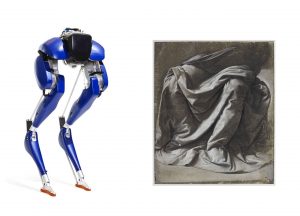THE GRACE MACHINE Seminar is an experiment that challenges the distinction between the humanities and technology by using a form of thinking based on what Roland Barthes called “gymnastic figures.” Five such figures—standing, jumping, hanging, floating, and falling—epitomize certain aspects of grace that enable the crisscrossing of various disciplines such as architecture, art history, media theory and philosophy.
How can jumps—from the small step to the huge leap, from the intuitive plunge to the brilliant twist—become more and more precise as they develop?
THE GRACE MACHINE Seminar is organized by Professor of Architecture Lars Spuybroek and his team at Georgia Tech (USA), enabling many more to participate in the project than their own students. The seminar will be organized online and allows for three levels of interaction: “audience,” for those who only want to listen in; “chorus,” for those who want to comment and interrupt; and “actors” who will take center stage in the discussions.
THE GRACE MACHINE Seminar will be open to any type of student, from undergrads to doctoral students, as well as faculty members. It will take place on Tuesdays and Thursdays between January and April 2022. For more details, please visit thegracemachine.com (using “jump”).
If you want to prepare yourself for THE GRACE MACHINE Seminar, please read Lars Spuybroek’s recent related book to this seminar, the highly-recommended Compact Theory Journey entitled Grace and Gravity, Architectures of the Figure (Bloomsbury Visual Arts, 2020).



